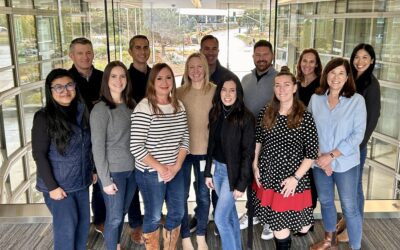Seriously, What Does “70-20-10” Even Mean?
There has been a lot of talk in learning circles in recent years about the 70-20-10 ratio. It has been applied especially to management or leadership development and claims that, ideally, 70% of learning should happen on the job, 20% should come from other people, and 10% should come from formal learning activities like classroom learning.
But like the existence of mythical “learning styles,” there isn’t any formal research to back this ratio up.
When numbers don’t add up.
There’s a fundamental mathematical fuzziness in the ratio. When we state a particular percentage of time, what time, exactly, are we calculating a percentage of? After all, the human brain is a learning organ; it’s learning something pretty much every hour we’re awake. Certainly we don’t mean that employees should spend 10% of their waking, working hours in formal learning. (That would amount to somewhere around 200 hours of formal learning per year.)
Maybe we mean something like 10% of all intentional learning and development activities. Even then, there are problems. For example, one survey showed that this isn’t really the ratio leaders prefer for their own development. They really prefer something more like 52-27-21, which allocates double the ideal formal learning percentage claimed by the 70-20-10 mantra.
But even that begs the question of whether learners can fairly judge how they learn best. After all, many learners will insist that they are visual learners, or auditory learners, or learn best by doing, when no study has shown that such style preferences make a difference in learning outcomes. (In fact, one study found that “learning styles” are largely a myth.)
Maybe the biggest challenge is the problem of definition. When we talk about intentional learning experiences, how do we distinguish among on-the-job learning, social learning, and formal learning, when many learning moments are a blend of any or all three?
For people who decide on learning investments and people-development strategies, the 70-20-10 framework helps with their decisions only in a general sense. You know that new skills and behaviors don’t become ingrained until they’ve been practiced on the job. You know that social development activities (such as reflection, coaching, and feedback) are essential to accelerate and deepen learning. You know that a day of formal training in the classroom does not a development program make. You don’t need 70-20-10 to tell you all that.
Dump the ratio and focus on people.
Rather than rely on an arbitrary, one-size-fits-all ratio, look at a blend of right-fit interventions that make sense for the people you need to develop and how you need to develop them. Ask questions like:
- What kinds of development activities will work well in their current role?
- What will work well, over time, within their social environment?
- What will work well in the context of your organization’s broader culture?
- How can we deploy people who are already performing at a high level to grow the next group?
- What is the right amount of structure to provide a platform for growth?
If you make decisions based on people, looking at the developing individuals and examining their roles, the relationships that bind them, the organizational structures that influence their behaviors, and the business imperatives that drive the entire enterprise, you’ll serve them much better than any oversimplified mathematical formula.
Want to talk about the 70-20-10 ratio with Mike? Give us a call at (859) 415-1000 or drop us a line in the form at the bottom of this page.




